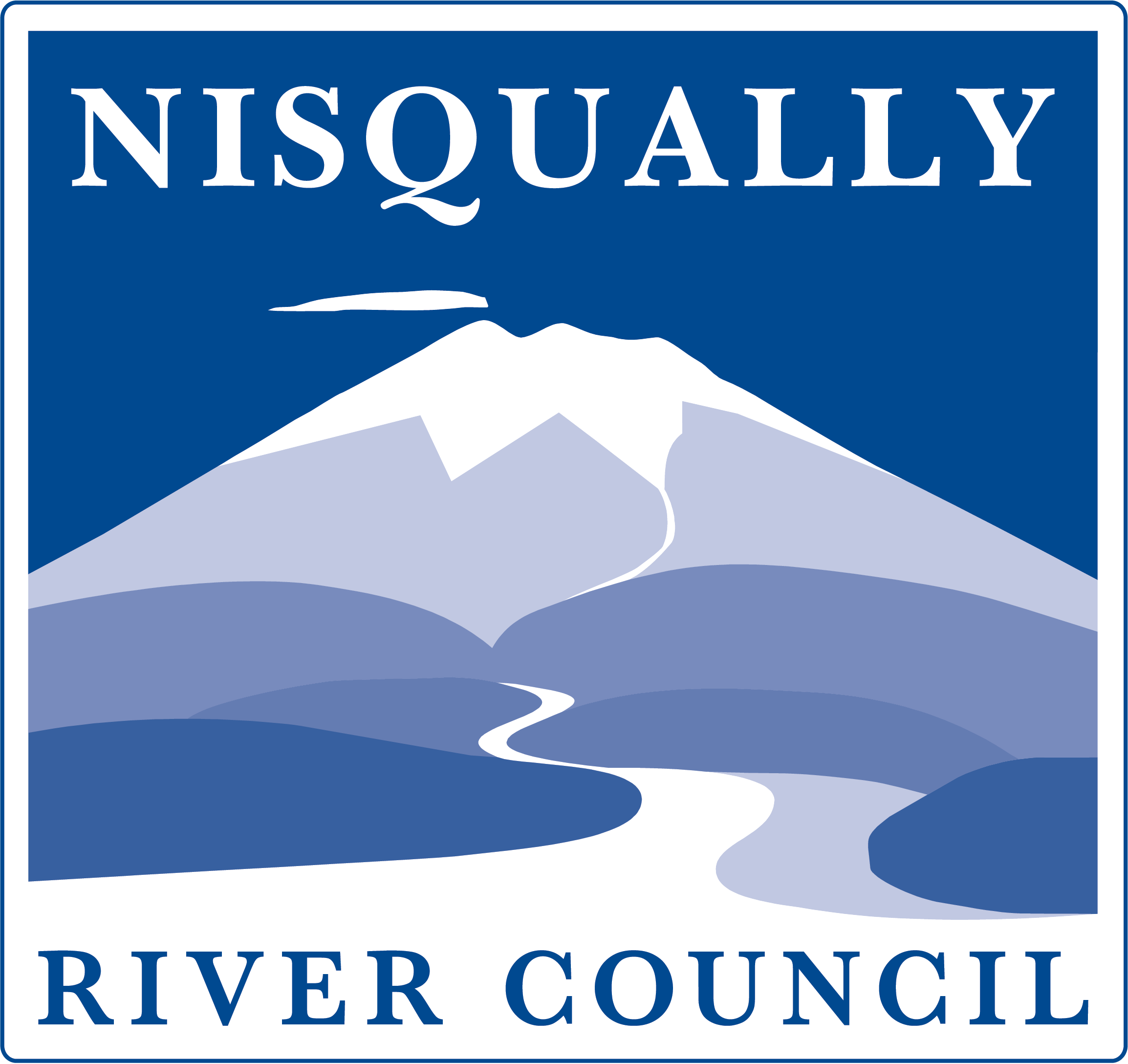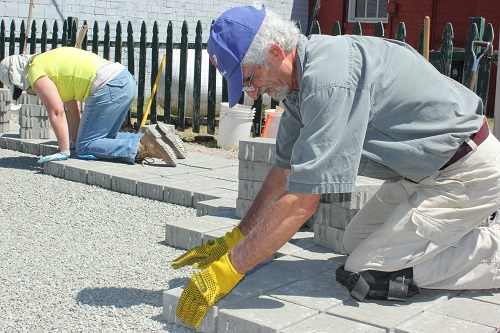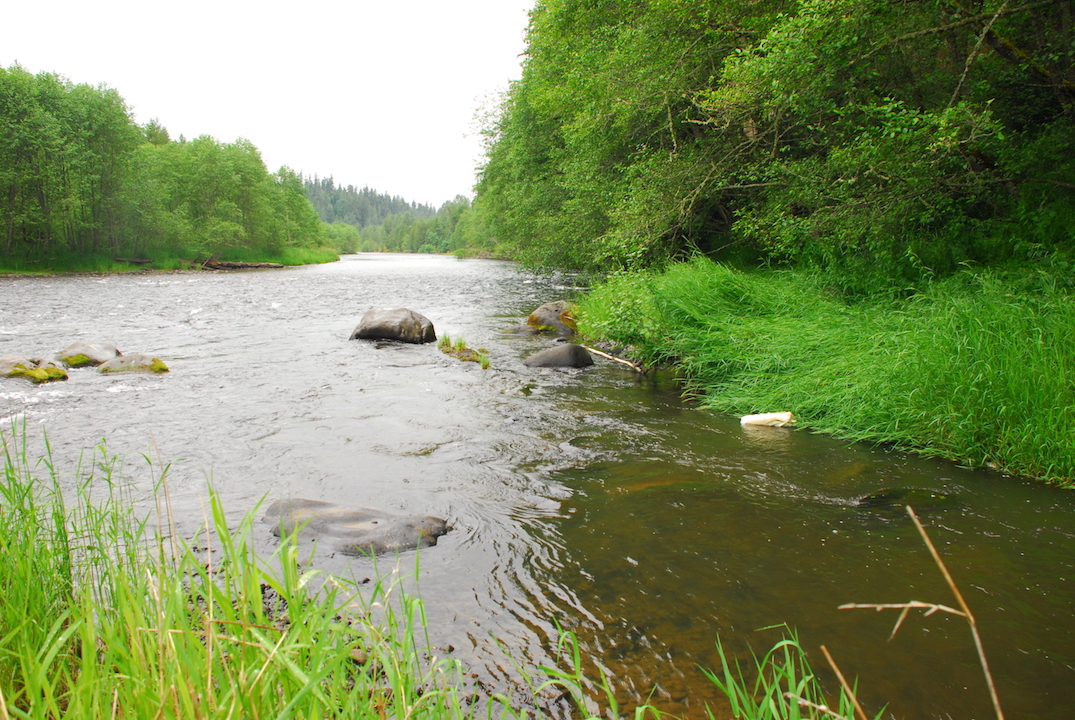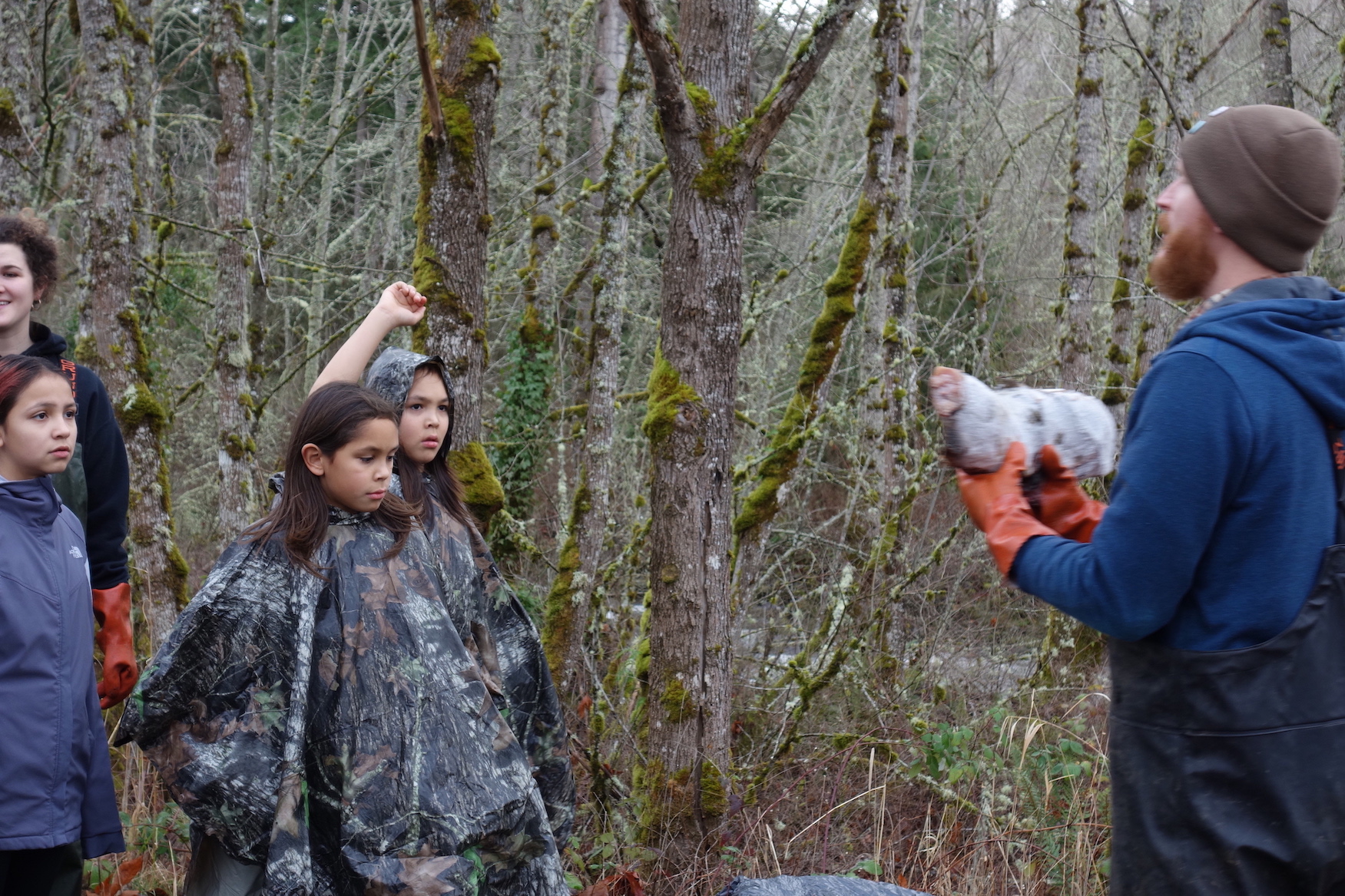“How do trees help salmon?” Before getting out in the field with students to plant trees as a habitat restoration activity, I asked this question during classroom presentations. While we think of salmon as purely aquatic species and trees as terrestrial, the relationship between these two demonstrates the deep interconnectedness of our ecosystems and the important roles both play in the health of our environment.
Trees stabilize stream banks with their complex root systems, helping to prevent er osion. Rivers and streams with high levels of erosion create unhealthy habitat for salmon; the increase in sedimentation from erosion can smother salmon eggs and affect their breathing. However, a fallen tree or branch can be beneficial in creating stream habitat complexity. This large woody debris creates pools behind log jams–perfect places for juvenile salmon to hide from predators, find refuge from the water current, and to find and consume both aquatic and terrestrial insects. Trees are also an integral part of the salmon’s food web, providing habitat and food for the insects salmon eat. Salmon are coldwater fish species, meaning they thrive in cold water, and can become stressed in warmer water. Just like we enjoy a tree’s shade on a hot summer day, so too do trees help keep water temperatures cool and salmon healthy and happy. The process by which trees create their own energy–photosynthesis–benefits not just salmon but the whole ecosystem, and our world! Plants “breathe” in carbon dioxide, a greenhouse gas. The absorption of this gas can help regulate climate change by storing carbon. The byproduct of photosynthesis is oxygen, which happens to be the gas we (and salmon!) need to breathe. You can read more about the relationship between salmon and trees in this article, The Quiet Love Affair between Fish and Trees.
osion. Rivers and streams with high levels of erosion create unhealthy habitat for salmon; the increase in sedimentation from erosion can smother salmon eggs and affect their breathing. However, a fallen tree or branch can be beneficial in creating stream habitat complexity. This large woody debris creates pools behind log jams–perfect places for juvenile salmon to hide from predators, find refuge from the water current, and to find and consume both aquatic and terrestrial insects. Trees are also an integral part of the salmon’s food web, providing habitat and food for the insects salmon eat. Salmon are coldwater fish species, meaning they thrive in cold water, and can become stressed in warmer water. Just like we enjoy a tree’s shade on a hot summer day, so too do trees help keep water temperatures cool and salmon healthy and happy. The process by which trees create their own energy–photosynthesis–benefits not just salmon but the whole ecosystem, and our world! Plants “breathe” in carbon dioxide, a greenhouse gas. The absorption of this gas can help regulate climate change by storing carbon. The byproduct of photosynthesis is oxygen, which happens to be the gas we (and salmon!) need to breathe. You can read more about the relationship between salmon and trees in this article, The Quiet Love Affair between Fish and Trees.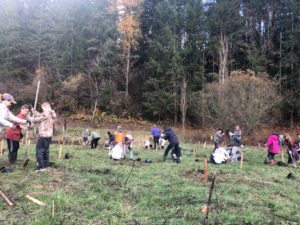
“Kids just don’t spend enough time playing in the dirt,” a parent volunteer noted, smiling as pairs of students dug holes, danced with trees , and examined earthworms. Though fun, the students were doing more than simply playing in the dirt. In three weeks of planting, 764 students from eleven different schools put 4,500 native plants in the ground, with help from some of our most committed volunteers and 120 parent chaperones. We consider such work service learning projects: students learn about environmental issues while contributing to a community project.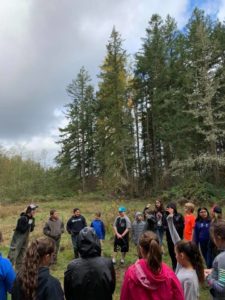
Students ranged from third graders to an ecological restoration class from UW Tacoma. We worked on two sites outside of Eatonville along the Mashel River and Ohop Creek, both of which are owned by the Nisqually Land Trust.
Compared to water quality testing, our tree planting trips are less structured, involving more physical work and the opportunity to get up close and personal with nature. In just three months of presentations and field trips, I’ve come to understand that some students thrive in the classroom answering and asking questions, some thrive following precise directions to test water for dissolved oxygen, and some thrive with shovel in hand, digging holes to establish healthy riparian plants. But all students perk up the moment they step off the bus, eager simply to explore and interact with another part of the beautiful Nisqually watershed.
A thank you card from a Nisqually Middle School student described what we hope all students gained from the experience: “I learned some real life skills, I helped the environment, and I had fun.” And a big thank you from us at the Nisqually River Education Project to all of the teachers, schools, volunteers, parents, and the Nisqually Land Trust for another great planting season!
